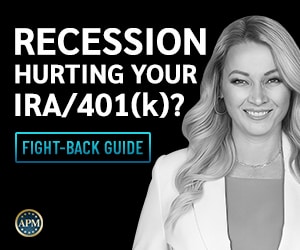Debt coverage ratio is the ratio determined by dividing the net operating income of the company and the debt service. Therefore, it is realized that the banking industry applies the usage of the debt coverage ratio in an effort to conduct the determination concerning whether a company possesses the strength to produce an adequate amount of money via the operations of the business in order to have enough coverage for the cost of debt. In addition, the company may attempt to utilize the debt coverage ratio in light of the same purpose.
Debt Coverage Ratio Formula
Debt Coverage Ratio = Net operating income / Debt Service
Determining the net operating income
With this being the case, it is important to realize that the net operating income of a company is determined by subtracting the operational expenses from the revenues. For the sake of conducting a comparison, the net income of a business takes into inclusion interest expenses that are incurred on debt, income that is not achieved via the normal operational scenario as well as taxes. It is noted that the net operating income of a business can be located on the income statement
Example of debt coverage ratio
Thus, an example pertaining to the debt coverage ratio is demonstrated in the scenario where a company indicates the possession of an operational income of two hundred thousand dollars in terms of its income statement. For this period, the debt payments are recorded as being thirty-five thousand dollars. When thirty-five thousand dollars is divided into two hundred thousand dollars, this would result in the company possessing a debt coverage ratio that equates to 5.71.
Debt coverage ratio calculator
Applied by companies and banks
As mentioned earlier, a company may apply the usage of the debt coverage ratio in order to achieve the determination regarding its capability to meet the cost of the payments pertaining to its debt. Also, within the realm of lending institutions, this type of ratio is applied for the same purpose.
In terms of lending, it is typical for financial organizations to resort to the usage of multiple metrics when it comes to the issue of performing the determination of the capability of a borrower to be able to make the payments of the debt. This is true regarding both loans to businesses and consumers. From an expanded perspective, the debt coverage ratio may be seen as an inversion of the ratio of debt to income which is addressed in regard to loans to consumers due to the fact that the income undergoes division by the payments of debt. Yet, it is to be understood that this is not to be comprehended literally because of the reality of differences.
The debt coverage ratio is often abbreviated as DCR. This debt coverage ratio is of vital essence in the domain of financing for real estate as well as lending at the commercial level. The debt coverage ratio is crucial when there is the underwriting of real estate that is commercial or when there is the underwriting of loans for business endeavors. Moreover, the debt coverage ratio must be taken into account in cases of tenant finances. It is a primary factor when there is the conducting of the determination of the maximum level of the amount of the loan that is permitted.
What the numbers of the DCR indicate
You may be wondering what the numbers of the DCR actually mean. If the number of DCR is larger than 1.0, there is an indication that the cash flow is sufficient to pay for the cost of the debt. However, when the number of DCR is less than 1.0, this shows there is insufficient money to cover the cost of the debt. Yet, it is to be realized that though the number of the DCR being at 1.0 indicates that there is sufficient money to pay the debt, this does not mean that this is the only requirement.
Normally, a lending institution will demand that the debt service ratio possess a level of more than 1.0 in order to solidify the presence of extra money for the possibility of such cases that something averse may occur. Take into consideration for example that if there is a requirement for a company to possess a debt coverage ratio of 1.20, this would allow for enough protection so that the net operating income could experience a decline of up to 16.7 percent and yet the company would remain in a good position to pay its debt.
You may wonder what is an appropriate level to consider regarding the debt coverage ratio. The truth is that there is no single answer to this question due to the fact that this element will be different at various banks, will be affected by the type of loan that is being sought and will also be affected by the kind of property. But the range for the debt coverage ratio is generally from 1.20 to 1.40. When properties are strong and stable, they will come in at the lower spectrum of this range. On the other side, properties that demonstrate more risk (which possess leases in the short-term or clients that have credit that is sketchy) will be placed at the higher level of the range.
Adjustments
It is to be noted that the lending institution may reserve the right to make some adjustments in regards to the net operating income of the business. Take into consideration for example that the lending institution may decide to also include reserves for the sake of replacement within the calculation of the net operating income of the business. As well, there may be the inclusion of a management fee. As a result of the lending institution being preoccupied with the capability of the money of the business to be able to pay the debt, such adjustments are often made by the banks in regard to the net operating costs of the business.
Thus, it is understood that reserves are money set aside for capital expenditures that will happen in the future. They can include significant repairs or replacements that may be needed for the maintaining of property for the long-term. This will place an impact on the capability of the borrower to make the debt payment.
























